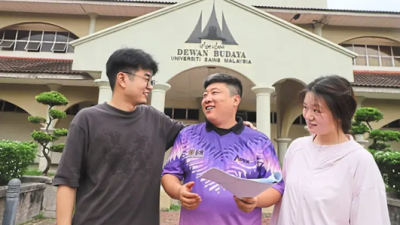Everyone has heard of Bentong ginger, but is Bentong ginger grown in Bentong itself?
Ginger farmer Ng Weng Nyuet says, "This is 100% Bukit Tinggi ginger!"
So, now we know that the celebrated Bentong ginger is actually from Bukit Tinggi, 20km from the better known Pahang town.
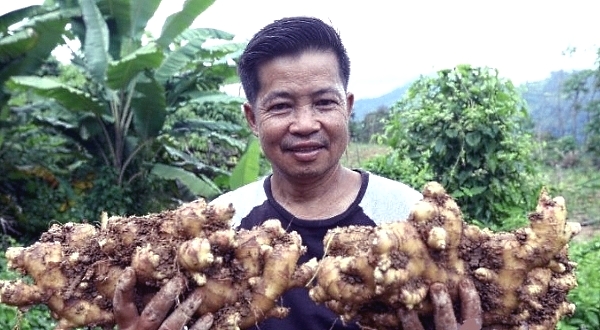
Ng told Sin Chew Daily early migrants from southern China brought along ginger because they loved it so much. To their surprise, ginger grew much better here than back in China!
"During those years people shared their harvest with one another, and soon the ginger here became very famous."
Alighting from the 4WD in the middle of nowhere, Ng said, "Well, we have to start walking from here, five hours!"
What? Five hours? He was kidding, but the walk to the ginger farm was by no means an easy feat, especially after a downpour.
We finally reached a shed used as a rest point for farm workers, surrounded by young ginger plants about two months old.
New shoots
Ng explained that when the first young ginger shoot growing from an old ginger to about ten leaves, a second ginger shoot will develop. After about four or five months, there will be around five new ginger shoots. Each new shoot means the ginger root is expanding sideways. It takes about eight to nine months from sowing to harvest.
"When the first shoot develops, you've got to fertilize the plant and weed. You need to cover it with four to five inches of soil after a little more than two months, as the exposed root will not grow well. You may also need to remove the worms, if any.
"If you grow the ginger during the rainy season, the root may rot easily and the entire ginger may have to be discarded."
"Just that simple! But, simple as it looks, you need to have a lot of patience."
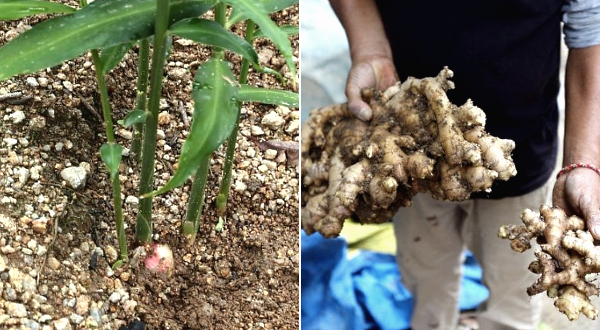
The aging processs
The ginger will start flowering after five months, a sign that the buried ginger root is beginning to mature. After that, the leaves will appear spotted and begin to wilt and die, and the weed will then start to grow.
Never mind about this, as the dead ginger shoots and growing weed will provide a protective shield to the aging ginger root underneath until it is ready for harvest after eight to nine months.
Harvesting has to be done carefully because if you break the root, it will not sell for a good price.
The unharvested ginger will continue to age until about 11 months when new shoots will germinate again. That's when you can grow the next round of ginger.
Of course, old ginger is also marketable as it can be used to make ginger tea and ginger duck, among others.
"Harvesting is the most joyful season for every farmer!"
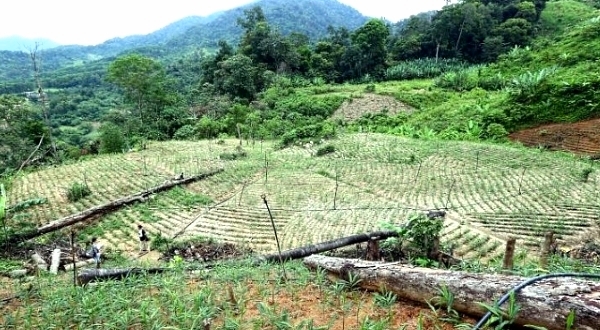
So, what is the toughest part in growing ginger?
"Land clearing," Ng said unhesitantly.
After harvesting, the land has to be rested for four years before replanting due to depletion of trace elements. The land will then be used to grow other legumes or vegetables.
Before replanting with ginger, the land has to be cleared of weed and compost burned to provide the nourishment for new ginger.
Land clearing is normally easier in the morning and much messier on a rainy day besides the fact the old ginger planted in the soggy soil rot more easily.
"Don't complain next time that local ginger is expensive!"
Fruit of hard labor
Indeed, there is a lot of work to do and the entire growing process is anything but easy.
Workers also have to go barefooted for fear the shoes may be contaminated with germs from the soil elsewhere which could infect the ginger.
"It's very sensitive. The germs can spread very fast and everything will be gone in no time."
Ng explained that his ginger was completely destroyed due to infection in just about a week some three years ago.
"The contaminated soil will no longer be suitable for ginger growing because residual germs may stay there. It has to be planted with something else, such as other vegetables and legumes.
"Farmers and workers have to be additionally careful not to take the contaminated soil to the uninfected soil.
"It will be a big headache if the contaminated soil is in the uphill area, as the rain water can bring it down to infect the ginger."
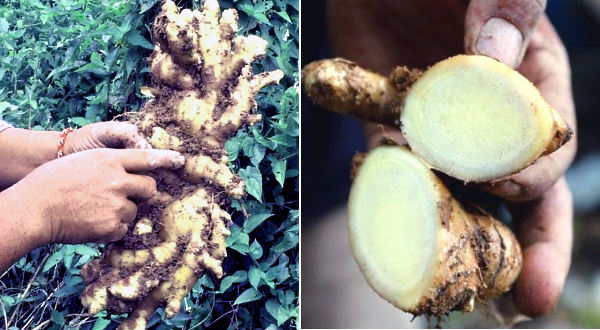
From city to farm
Lying between 600 and 800 meters above sea level, Bukit Tinggi has the perfect weather for ginger growing.
"80% of the villagers here are ginger farmers."
Ng said he started growing ginger at a very young age, with his parents, adding that farmers used to do everything by themselves during the olden days while new generation farmers now rely more on hired workers.
Ng used to be a mechanic for almost 20 years in KL, and returned to his native village about 11 years ago to go into full-time farming.
Besides ginger, he is also growing legumes, durian, rambutan and banana, among others.
He admitted that he could not adapt himself to life as a farmer initially, and it took him a whole year to become interested in this line.
"I feel a sense of achievement seeing the crops grow and be harvested.
"Moreover, the air here is very fresh and the serene natural environment here makes one feel relaxed."
Of his farmland, a plot has been inherited from his father who started growing tobacco, groundnut, watercress and other vegetables there in the 1950s. The rest of the farmland is leased from the government.
"If the state government wants to take back the land for development, we will have to move out!"
ADVERTISEMENT
ADVERTISEMENT







